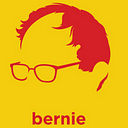Tulsi Gabbard’s Independent/Third Party 2020 Presidential Campaign: A Threat Assessment
There is a lot of talk about Democratic Presidential candidate Tulsi Gabbard potentially spoiling the 2020 president election to re-elect Donald Trump by running as third-party or independent presidential candidate, splitting the anti-Trump vote. Jill Stein arguably spoiled the 2016 election and Ralph Nader played the same role the 2000 election.
Yet very little attention has been paid to just how exactly this 2020 nightmare scenario would actually materialize, which comes down to whether Tulsi Gabbard can gain ballot access in swing states that decide who gets 270 Electoral College votes.
Since Gabbard will not be the presidential nominee of either of America’s two major political parties, she would have to either obtain such access as an independent and/or by winning the endorsement of either the Green or Libertarian parties (which managed in 2016 to gain ballot access in 44 and 50 states, respectively). So far there is no indication that either party would be amenable to Gabbard parachuting in to be their nominee. The Libertarians typically nominate a free-market ideologue of long standing. The Greens have a history of selecting celebrity presidential candidates like Ralph Nader and Cynthia McKinney but they both developed working relationships with the party prior to being nominated, unlike Gabbard. (The Greens also rejected Roseanne Barr in 2012 in favor of one of their own, Jill Stein.) Not only does Gabbard lack a pre-existing relationship with the Green Party as a long-time right-wing Democrat, she would have to compete for the nomination with Howie Hawkins who has run as a Green for decades and is widely considered to be their frontrunner.
Gaining ballot access as an independent in the likely 2020 battleground or swing states would require the following:
- In Arizona, Gabbard would need a little over 38,000 valid petition signatures* no later than 60 days before the November election.
- In Florida, Gabbard would need almost 133,000 valid petition signatures** by July 15, 2020.
- In Michigan, Gabbard would need 30,000 valid petition signatures with at least 100 coming from at least half of the state’s 14 congressional districts by July 16, 2020.
- In North Carolina, Gabbard would need 70,665 valid petition signatures by March 3, 2020.
- In Pennsylvania, Gabbard would need almost 60,000 valid petition signatures*** by August 1, 2020.
- In Wisconsin, Gabbard would need 2,000 valid petition signatures by August 4, 2020.
In theory, obtaining an aggregate of 300,000 signatures in these six states is do-able but in practice, not so much. Consider the fact that the Arizona Green Party lost its 2020 ballot access because it was unable to get 30,000 valid petition signatures in 11 months — they managed to accumulate at best 10,000 signatures by the time of the November 27, 2019 deadline. Gabbard would have to get more signatures than the Greens were required to in less time to get on the ballot there.
Furthermore, candidates typically need 30% more signatures than the legal minimum since so many signatures get disqualified during court challenges.
So for the 2020 spoiler scenario to occur, Tulsi Gabbard would need to out-perform the Green Party with a much smaller (or virtually non-existent) activist base in at least a handful of states to sway the Electoral College outcome. Is it impossible? No. Is it likely? Also no. This possibility is even more remote now that Gabbard has moved to New Hampshire to spend every waking moment of her life over the next two months losing February’s Democratic presidential primary there as opposed to trying to build up a campaign infrastructure in swing states for a general election spoiler effort.
Footnotes
*Arizona requires independents to have valid signatures of 3% of voters not registered with existing political parties which works out to about 38,000 names.
**Florida requires signatures equal to 1% of the state’s registered voters.
***Pennsylvania requires signatures equal to 2% of the vote total of the highest vote-getter in the previous statewide election.
